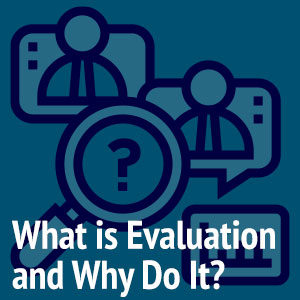 Qualitative interviews can be an important source of program evaluation data. Both in-depth individual interviews and focus group interviews are important methods that provide insights and phenomenologically rich descriptive information that other, numerically oriented data collection methods (e.g., questionnaires and surveys), are often unable to capture. Typically, interviews are either structured, semi-structured, or unstructured. (Structured interviews are, essentially, verbally administered questionnaires, in which a list of predetermined questions is asked. Semi-structured interviews consist of several key questions that help to define the areas to be explored, but allow the interviewer to diverge from the questions in order to pursue or follow up to an idea or response. Unstructured interviews start with an opening question, but don’t employ a detailed interview protocol, favoring instead the interviewer’s spontaneous generation of subsequent follow-up questions. See P. Gill1, K. Stewart2, E. Treasure3 & B. Chadwick, cited below.)
Qualitative interviews can be an important source of program evaluation data. Both in-depth individual interviews and focus group interviews are important methods that provide insights and phenomenologically rich descriptive information that other, numerically oriented data collection methods (e.g., questionnaires and surveys), are often unable to capture. Typically, interviews are either structured, semi-structured, or unstructured. (Structured interviews are, essentially, verbally administered questionnaires, in which a list of predetermined questions is asked. Semi-structured interviews consist of several key questions that help to define the areas to be explored, but allow the interviewer to diverge from the questions in order to pursue or follow up to an idea or response. Unstructured interviews start with an opening question, but don’t employ a detailed interview protocol, favoring instead the interviewer’s spontaneous generation of subsequent follow-up questions. See P. Gill1, K. Stewart2, E. Treasure3 & B. Chadwick, cited below.)
Interviews, especially one-on-one, in-person, interviews, allow an evaluator to participate in direct conversations with program participants, program staff, community members, and other program stakeholders. These conversations enable the evaluator to learn about interviewees’ experiences, perspectives, attitudes, motivations, beliefs, personal history, and knowledge. Interviews can be the source of pertinent information that is often unavailable to other methodological approaches. Qualitative interviews enable evaluators to: elicit direct responses from interviewees, probe and ask follow-up questions, gather rich and detailed descriptive data, offer real-time opportunities to explain and clarify interview questions, observe the affective responses of interviewees, and ultimately, to conduct thorough-going explorations of topics and issues critical to the evaluation initiative.
Although less intimate, focus group interviews are another key source of evaluation data. Organized around a set of guiding questions, focus groups typically are composed of 6-10 people and a moderator who poses open-ended questions to focus group participants. Focus groups usually include people who are somewhat similar in characteristics or social roles. Participants are selected for their knowledge, reflectiveness, and willingness to engage topics or questions. Ideally – although not always possible – it is best to involve participants who don’t previously know one another. Focus groups can be especially useful in clarifying, qualifying, and/or challenging data collected through other methods. Consequently they can be useful as a tool for corroborating findings from other research methodologies.
Regardless of the specific form of qualitative interview—individual or focus group, in-person or telephone—qualitative interviews can be useful in providing data about participants’ experience in, and ultimately the effectiveness of, programs and initiatives. To find out more about our use of qualitative data visit our Data collection & Outcome measurement page.
Resources:
Learning from Strangers: The Art and Method of Qualitative Interview Studies, Robert S. Weiss, Free Press.
Interviewing as Qualitative Research: A Guide for Researchers in Education and the Social Sciences, Irving Seidman. Fourth Edition.
Qualitative Research Methods Overview
Interviewing—The Robert Wood Johnson Foundation
Advantages and Disadvantages of Face-to-Face Data Collection



